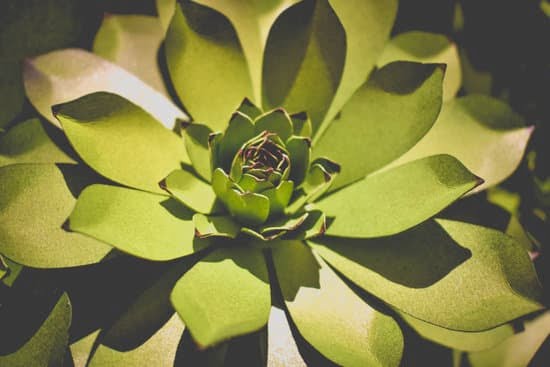Are you looking for perennial landscape ideas to enhance the beauty of your garden? Perennial plants offer a long-lasting impact on the overall aesthetic of a landscape, providing year-round interest and color. In this article, we will explore the various benefits of using perennial plants in landscaping and provide expert tips on how to incorporate them into your garden design.
When it comes to creating a stunning and low-maintenance garden, perennial plants are an ideal choice. Not only do they add beauty and interest to the landscape, but they also require minimal effort to maintain. From vibrant flowers to lush shrubs and majestic trees, there are endless possibilities for incorporating perennials into your outdoor space.
In the following sections, we will highlight some of the best perennial plants for landscaping, provide design tips on how to seamlessly integrate them into your garden, discuss seasonal interest and low-maintenance options, explore their use for edging and borders, offer creative landscaping ideas, and provide essential care tips for maintaining these beautiful plants. Whether you’re a seasoned gardener or new to landscaping, there’s something for everyone in this comprehensive guide to perennial landscape ideas.
Best Perennial Plants
When it comes to perennial landscape ideas, selecting the best plants for your garden is crucial. There are a wide variety of perennial plants available, each offering unique colors, heights, and maintenance requirements. By carefully choosing the right combination of perennials, you can create a stunning and long-lasting landscape design that provides endless beauty throughout the year.
Perennial Flowers
Perennial flowers are an excellent choice for adding pops of color to your landscape. Some popular options include peonies, daylilies, black-eyed susans, and lavender. These flowers come in a range of hues such as vibrant reds, soft pinks, and sunny yellows, allowing you to create a visually appealing and dynamic garden.
Perennial Shrubs
For those looking to add some height and structure to their garden, perennial shrubs are the way to go. Options like hydrangeas, butterfly bushes, and azaleas offer not only beautiful blooms but also lush foliage that can provide year-round interest. These shrubs come in various sizes and shapes, making them versatile additions to any landscape.
Perennial Trees
Incorporating perennial trees into your garden can bring a sense of permanence and grandeur. Trees such as dogwoods, magnolias, and redbuds provide stunning spring blossoms and colorful fall foliage. They also offer shade and habitat for wildlife while adding vertical dimension to the landscape.
By understanding the characteristics of these best perennial plants – from flowers to shrubs to trees – homeowners can make informed decisions about which ones will work best in their landscapes. Whether aiming for vibrant color schemes or year-round interest, there is a perfect combination of perennials out there for every type of garden.
Design Tips
When it comes to creating a beautiful landscape using perennial plants, there are several expert tips to keep in mind. One of the most important aspects of incorporating perennials into a landscape design is to mix different types of plants. This can include combining various flowers, shrubs, and trees to create visual interest and diversity within the garden. By mixing different types of perennials, homeowners can create a dynamic and ever-changing landscape that remains visually engaging throughout the year.
Another essential design tip for using perennial plants in landscaping is to create focal points within the garden. This can be achieved by strategically placing taller or more colorful perennials in key areas of the landscape, drawing attention and creating visual interest. Focal points can help to anchor a garden and provide a sense of balance and symmetry to the overall design.
Utilizing the varying heights and textures of perennial plants is also crucial when designing a landscape. By incorporating plants with different heights and foliage textures, homeowners can add depth and dimension to their gardens.
For example, combining low-growing ground cover perennials with taller flowering perennials can create a layered effect that adds visual interest and complexity to the overall aesthetic of the garden. These expert tips for incorporating perennial plants into a landscape design are essential for creating a vibrant and visually appealing outdoor space that will stand the test of time.
Seasonal Interest
When planning a perennial landscape, it’s essential to select plants that will provide interest and color throughout the different seasons. By doing so, you can ensure that your landscape remains vibrant year-round, creating an ever-changing display of beauty in your outdoor space.
Consider Seasonal Blooms
When choosing perennial plants for your landscape, it’s important to consider the blooming seasons of each plant. By selecting a variety of perennials that bloom in different seasons, you can create a continuous flow of color and interest in your garden. For example, you might choose spring-blooming tulips and daffodils, summer-blooming black-eyed Susans and coneflowers, and fall-blooming asters and sedum to ensure a visually appealing landscape throughout the year.
Utilize Evergreen Perennials
In addition to selecting perennials that bloom at different times of the year, consider incorporating evergreen perennials into your landscape design. Evergreen perennials maintain their foliage year-round, providing greenery and structure to the garden even during the winter months. Some popular evergreen perennial options include hellebores, heuchera, and coral bells.
Focus on Foliage
While blooms certainly add visual interest to a landscape, don’t overlook the importance of foliage in creating a captivating garden design. Many perennial plants have striking foliage that provides color and texture throughout the seasons. For example, hostas come in a variety of colors and patterns and offer lush foliage from spring through fall. Incorporating plants with interesting foliage ensures that your landscape remains visually appealing even when they are not in bloom.
By carefully selecting perennial plants with seasonal interest in mind and incorporating a mix of blooming perennials, evergreen varieties, and plants with attractive foliage into your landscape design, you can create a dynamic outdoor space that is visually appealing year-round. These considerations are essential for crafting stunning perennial landscapes that captivate viewers regardless of the season or weather conditions.
Low-Maintenance Perennials
When it comes to landscaping, choosing low-maintenance perennial plants can be incredibly beneficial for busy homeowners or those new to gardening. These plants are not only easy to care for but also provide long-lasting beauty and interest in the garden. Here are some low-maintenance perennial plants that are perfect for any landscape:
- Sedum: These drought-tolerant succulent perennials come in a variety of colors and are extremely low-maintenance, making them ideal for busy homeowners.
- Lavender: Known for its fragrant flowers and ability to attract pollinators, lavender is a hardy perennial that requires minimal care once established.
- Daylilies: With their vibrant blooms and adaptability to various soil conditions, daylilies are an excellent choice for low-maintenance gardening.
In addition to these specific plant suggestions, there are several tips for maintaining a low-maintenance perennial garden. It’s important to ensure proper watering during the initial stages of growth, as well as regular fertilization to promote healthy foliage and blooms. Mulching around the base of the plants can also help conserve moisture and suppress weed growth, reducing the amount of maintenance required.
When incorporating low-maintenance perennials into a landscape design, consider grouping plants with similar care requirements together. This will make it easier to provide the necessary care and maintenance without having to cater to individual plant needs. With careful planning and selection of low-maintenance perennial plants, even those new to gardening can enjoy a beautiful and sustainable landscape without feeling overwhelmed by maintenance tasks.
Perennial Edging
A well-designed landscape can be enhanced by the thoughtful use of perennial plants in creating borders and edging. By strategically placing these plants, you can add both beauty and structure to the overall design of your garden. When it comes to choosing the right perennials for edging, there are several factors to consider, such as size, color, texture, and maintenance requirements.
One popular choice for perennial edging is the low-growing and hardy Sedum “Autumn Joy”. This versatile plant features attractive succulent foliage and clusters of pink flowers that bloom from late summer to fall, adding a pop of color to your landscape. For a more delicate touch, consider using the vibrant blue foliage of Blue Fescue grass along borders or pathways. The cool hue adds a calming effect to your garden while requiring minimal care.
In addition to flowers, ornamental grasses like Fountain Grass or Japanese Silver Grass can provide graceful and flowing lines along your landscape edges. The feathery plumes and unique textures of these grasses create a softening effect that complements both formal and naturalistic garden styles.
When selecting perennial plants for your landscape edging, it’s important to choose varieties that will thrive in your specific climate and soil conditions. With careful planning and selection, perennial edging can elevate the visual appeal of your garden while enhancing its overall structure.
| Perennial Plant | Main Features |
|---|---|
| Sedum “Autumn Joy” | Low-growing with succulent foliage; clusters of pink flowers from late summer to fall |
| Blue Fescue Grass | Vibrant blue foliage; requires minimal care; perfect for border or pathways |
| Fountain Grass/Japanese Silver Grass | Feathery plumes; provides graceful lines along landscape edges; compliments formal and naturalistic garden styles |
Landscaping Ideas
Incorporating perennial plants into a landscape offers an abundance of creative possibilities, regardless of the preferred style. For cottage gardens, consider mixing an array of colorful flowers such as lavender, daisies, and coneflowers to create a charming and picturesque setting. These types of gardens often feature winding paths and informal planting arrangements, allowing for a more relaxed and whimsical atmosphere.
On the other hand, formal gardens benefit from well-structured designs that highlight the symmetry and elegance of perennial plants. Using neatly trimmed hedges as a backdrop for striking perennials like roses or peonies can create a polished and refined look. Additionally, incorporating perennial shrubs with varying heights adds visual interest while maintaining the garden’s tailored appearance.
For those who prefer naturalistic landscapes that mimic the beauty found in nature, incorporating native perennial plants is essential. Utilize a combination of grasses, wildflowers, and indigenous shrubs to create a flourishing habitat for local wildlife while providing year-round interest through changing foliage colors and textures. This type of landscaping allows for a more organic feel by embracing the inherent beauty of the land.
Ultimately, choosing the right perennial landscape ideas depends on personal style preferences and the specific characteristics of the outdoor space. By carefully considering these different landscaping styles when incorporating perennial plants, homeowners can achieve stunning garden designs that are both visually appealing and environmentally conscious.
Perennial Care
Caring for perennial plants is essential to ensure they thrive and remain visually appealing in a landscape. One of the most important aspects of caring for perennials is watering. While some varieties are drought-tolerant, others require regular watering, especially during hot and dry weather. It’s crucial to water at the base of the plants to prevent fungal diseases and ensure deep root growth.
Fertilizing is another key factor in maintaining perennial plants. Using a balanced, slow-release fertilizer in the spring can provide essential nutrients for healthy growth and blooming. It’s important to follow the specific recommendations for each type of perennial plant, as their nutrient requirements may vary.
Dealing with pests and diseases is an inevitable part of gardening, but there are ways to prevent and manage these issues with perennials. Inspecting plants regularly for any signs of pests or diseases can help catch problems early on. Organic pest control methods such as insecticidal soaps and horticultural oils can be effective in managing common pests without harming beneficial insects or the environment.
In addition, promoting good air circulation around plants by proper spacing and pruning can help prevent diseases caused by fungal pathogens. Taking these essential care tips into consideration will ensure that perennial plants remain healthy and vibrant, adding long-lasting beauty to any landscape design.
Perennial Care: Essential Maintenance Tips
| Care Aspect | Tips |
|---|---|
| Watering | Water at the base of plants; adjust frequency based on variety’s needs. |
| Fertilizing | Use balanced, slow-release fertilizer; follow specific plant recommendations. |
| Pests and Diseases | Regularly inspect for signs; use organic pest control methods if needed. |
Conclusion
In conclusion, incorporating perennial plants into a landscape can bring numerous benefits that contribute to creating a beautiful and vibrant outdoor space. From the wide variety of colors, textures, and heights to the long-lasting impact and seasonal interest, perennial plants offer endless possibilities for creating a stunning garden. Whether you are looking to add pops of color with flowering perennials or create structure with shrubs and trees, there are plenty of options to suit every preference and style.
By following the design tips provided, such as mixing different types of perennials, creating focal points, and utilizing varying heights and textures, homeowners can easily create a dynamic and visually appealing landscape. These low-maintenance perennial plants are perfect for those with busy schedules or those new to gardening but still want a beautiful outdoor space to enjoy.
Additionally, by exploring various landscaping ideas such as cottage gardens or naturalistic landscapes, individuals can find inspiration on how to incorporate perennial plants into their own unique style.
With the right care and maintenance, a garden filled with perennial plants can flourish for years to come, providing an enduring source of natural beauty that enhances any outdoor space. Therefore, by starting your own perennial garden using these ideas and expert tips, you can look forward to enjoying the long-lasting benefits of incorporating perennial plants into your landscape.
Frequently Asked Questions
How Do You Layer Perennials?
Perennials can be layered in a garden by considering their height, bloom time, and color. Taller perennials can be placed at the back of a flowerbed, while medium-height ones go in the middle, and shorter ones at the front.
By mixing different types of perennials with varying bloom times and colors, you can create a dynamic and visually interesting garden that blooms throughout the growing season.
What Flowers Spread and Come Back Every Year?
Some flowers that spread and come back every year include daylilies, yarrow, black-eyed Susans, coneflowers, astilbe, and sedum. These low-maintenance plants are excellent choices for gardeners who want to enjoy beautiful blooms without replanting every year. When choosing perennial flowers for your garden, look for ones known for their spreading habit or naturalizing tendencies.
How Do I Arrange Perennials in My Garden?
When arranging perennials in your garden, consider factors such as sunlight requirements, soil type, and watering needs. Group together perennials with similar growing conditions to ensure they thrive in their designated spots. Mixing different heights and textures will add visual interest to your garden.
Additionally, consider the bloom time of each perennial so that you have a continuous display of flowers throughout the growing season. With careful planning and consideration of each plant’s needs, you can create an aesthetically pleasing arrangement of perennials in your garden.

Welcome to my gardening blog! I am passionate about plants and enjoy sharing my knowledge and experiences with others. In this blog, I will write about everything related to gardening, from tips on how to get started to updates on my own garden projects.





